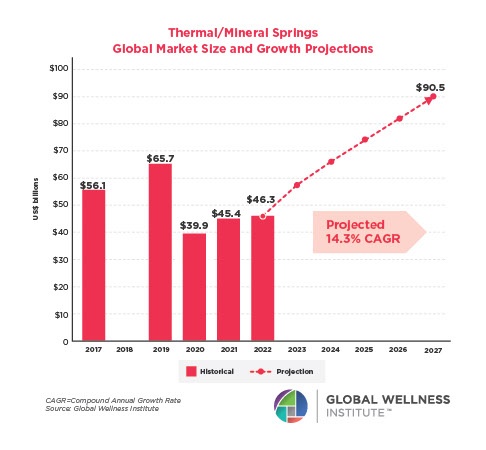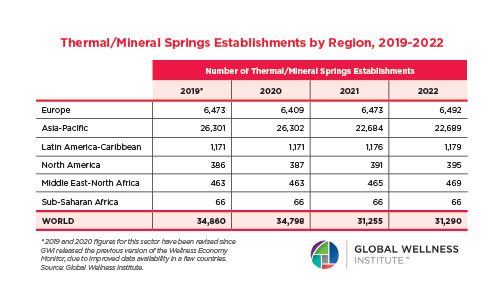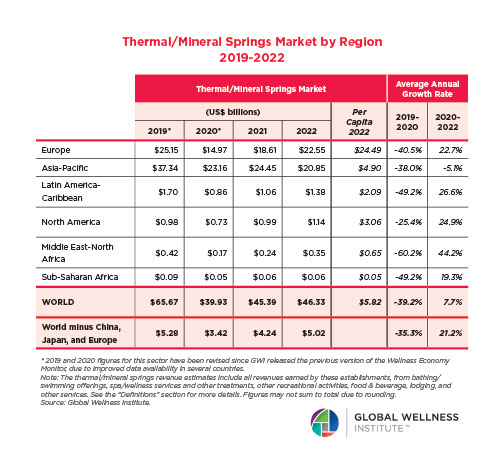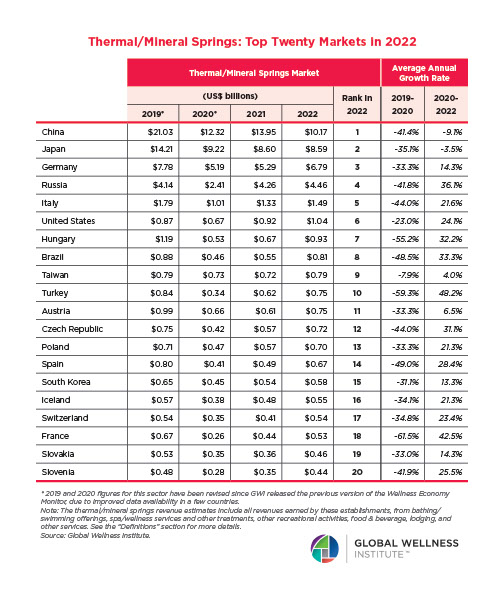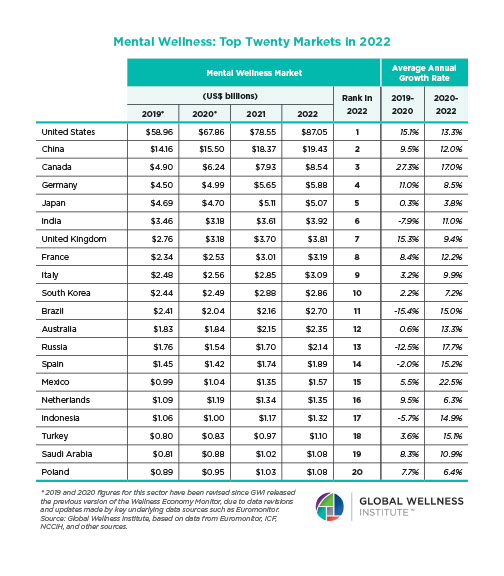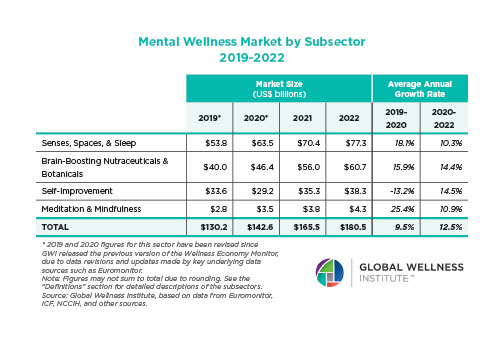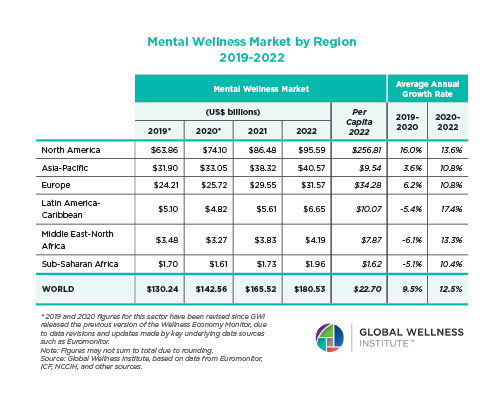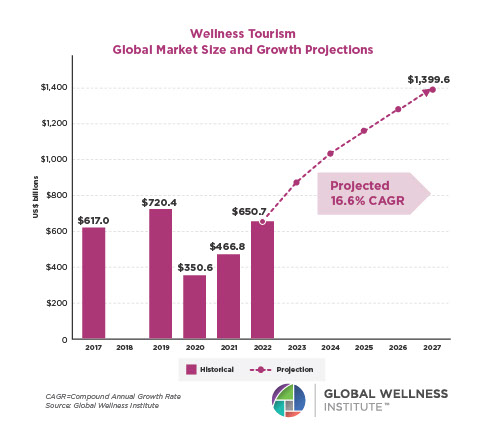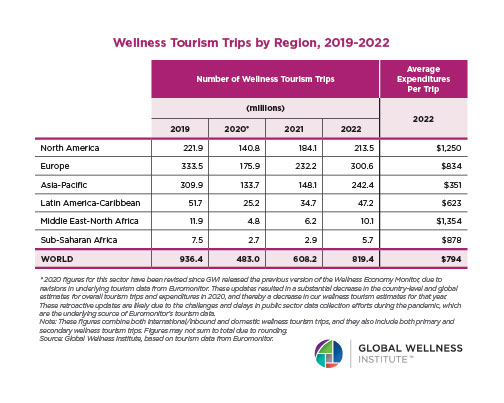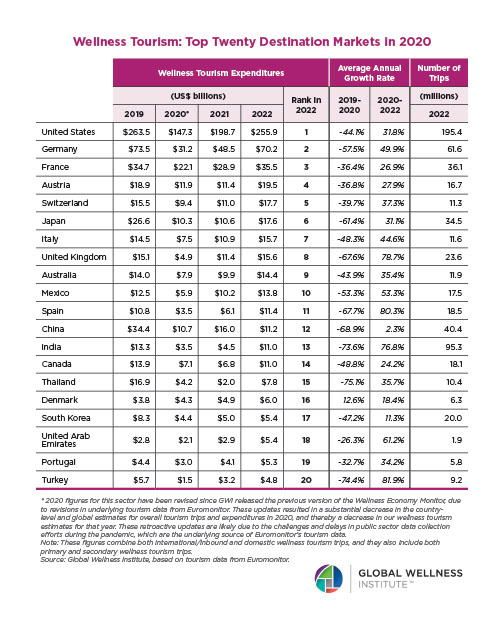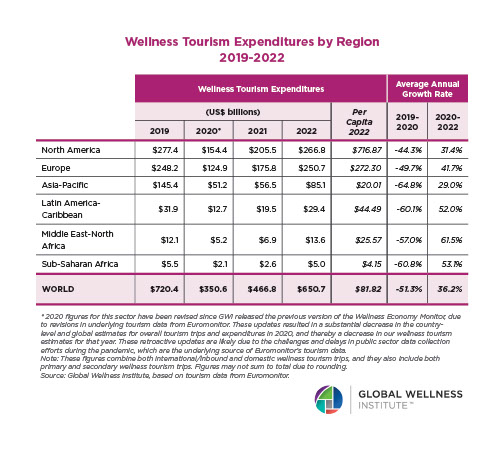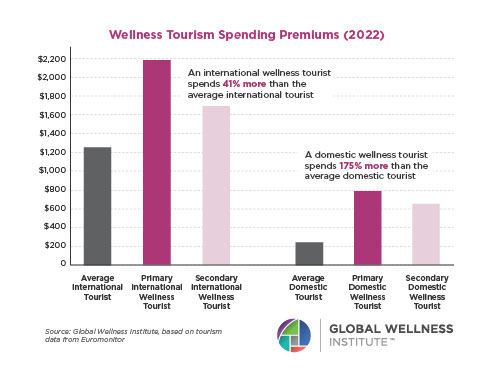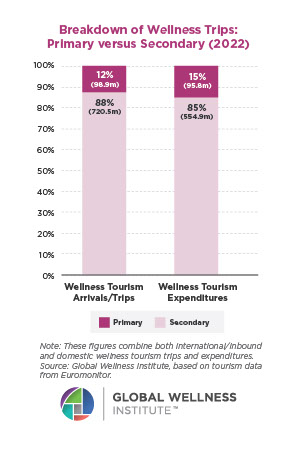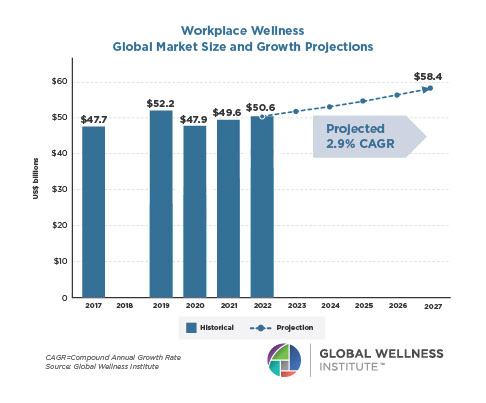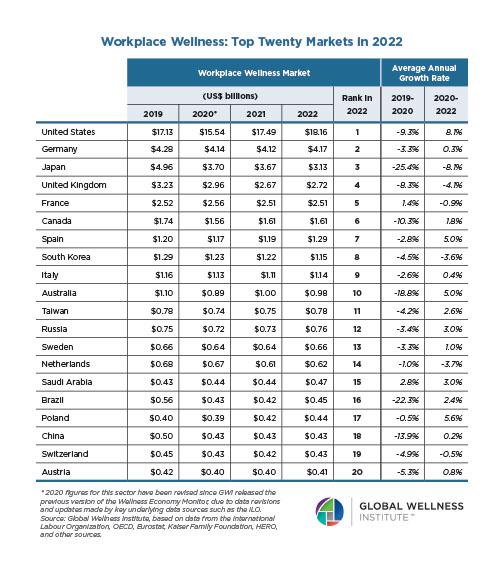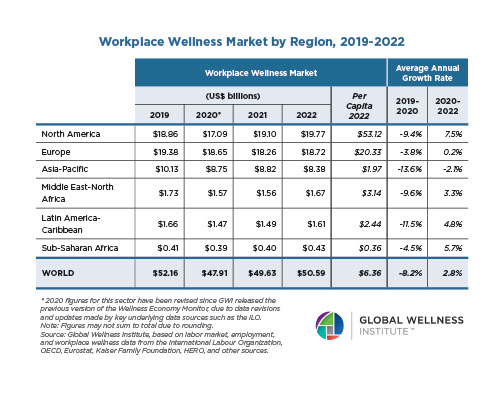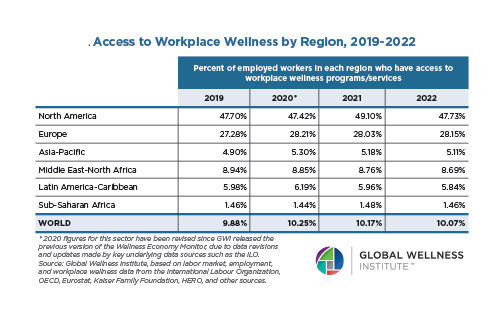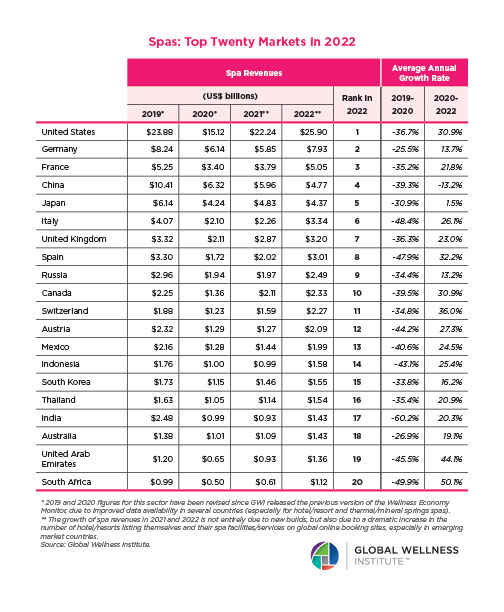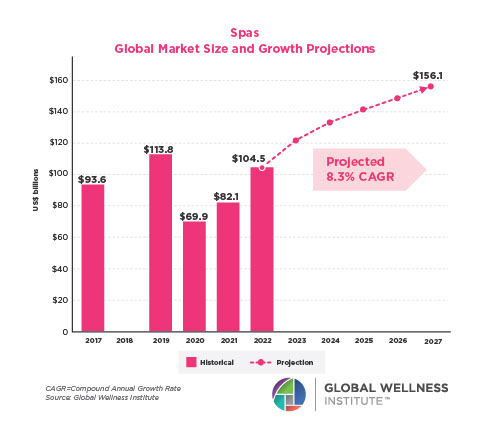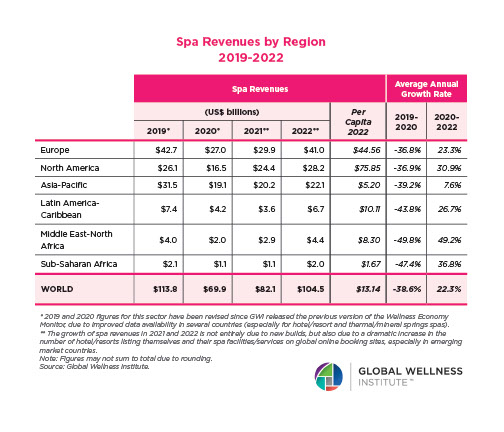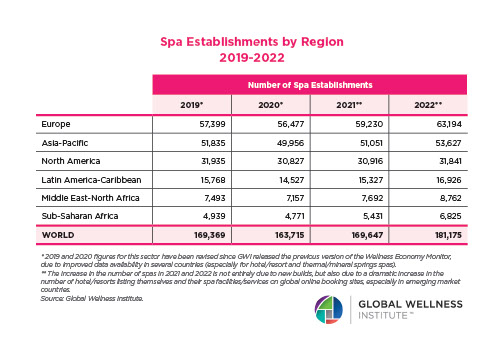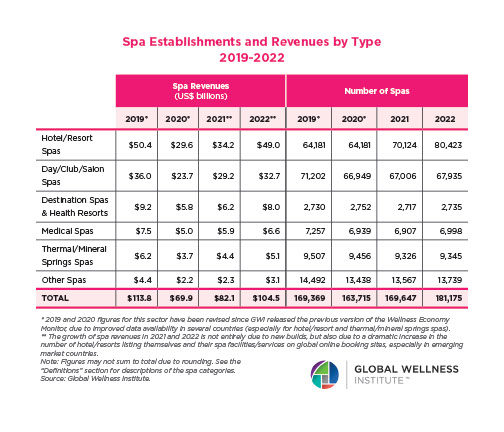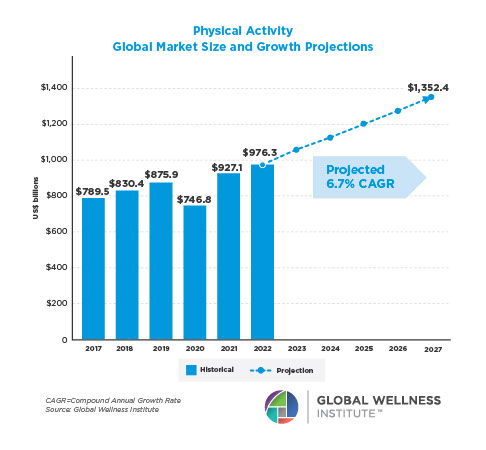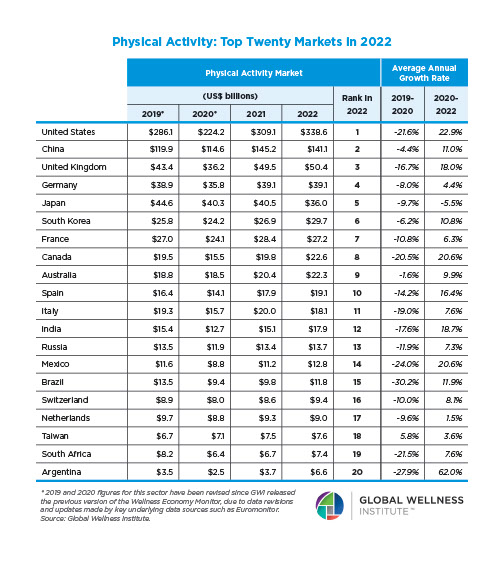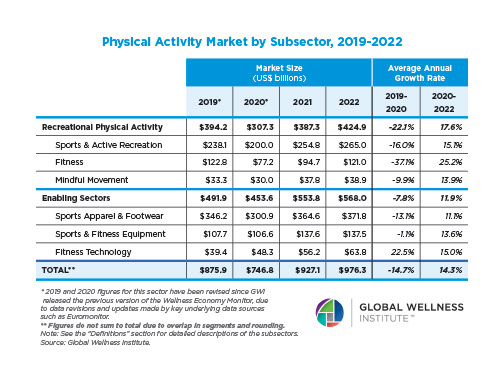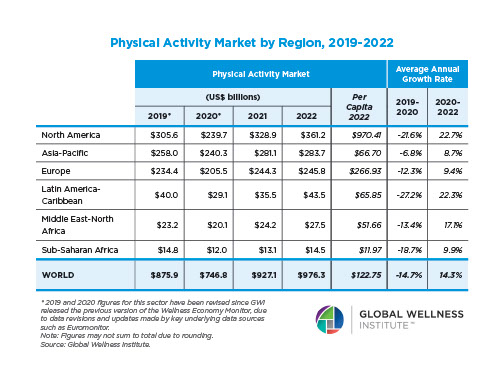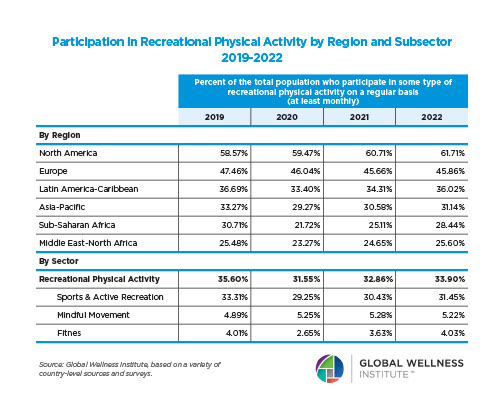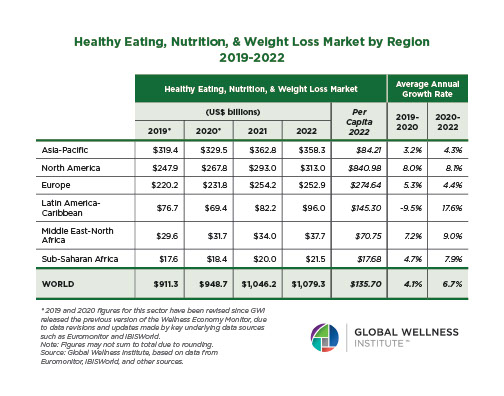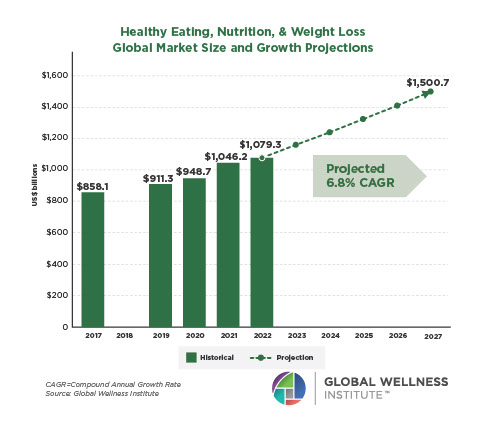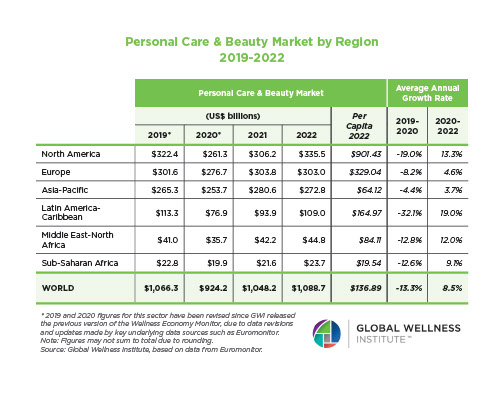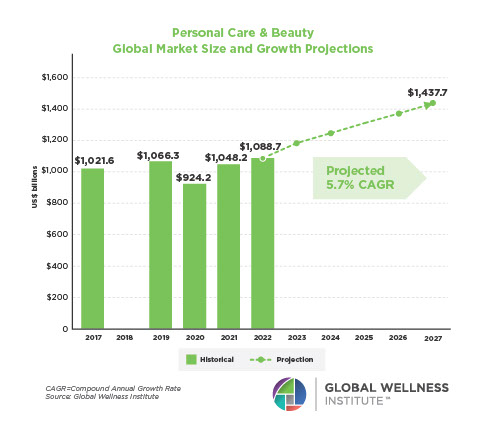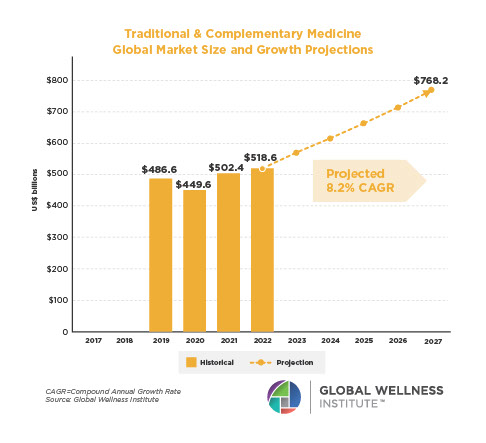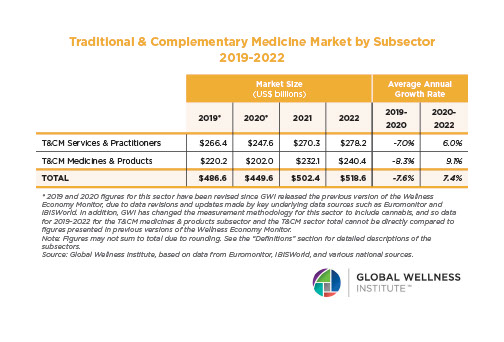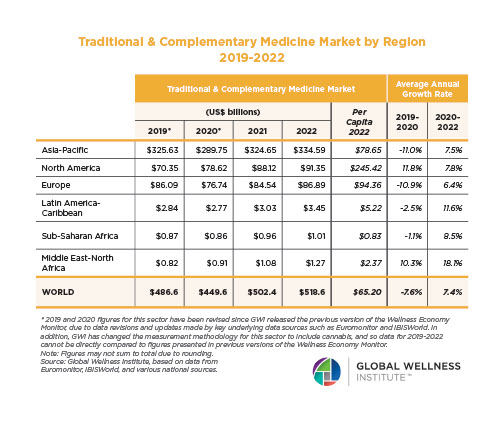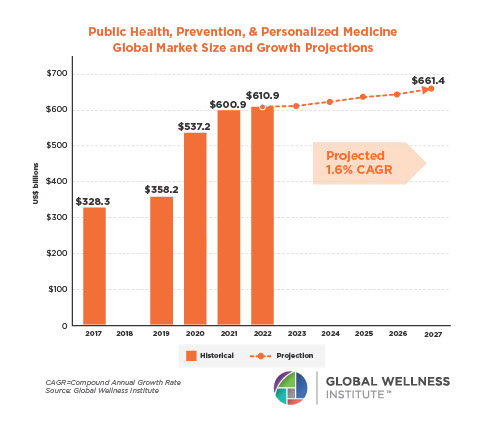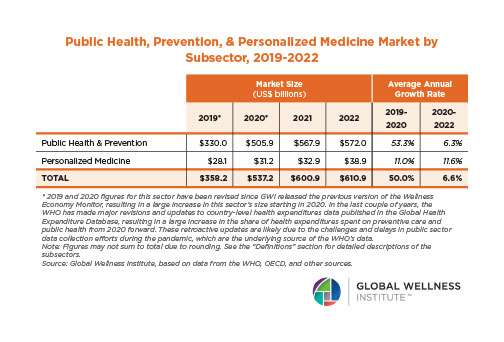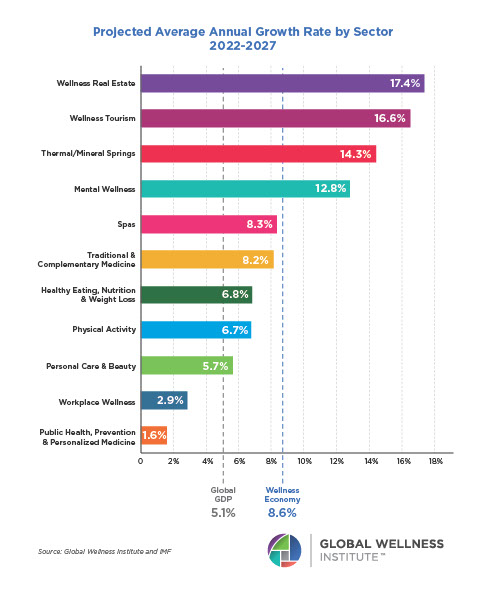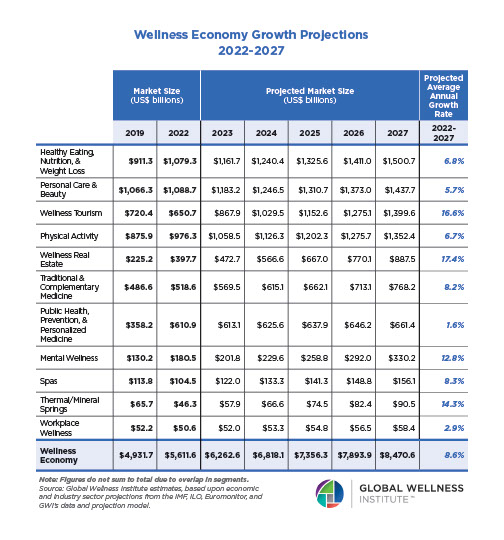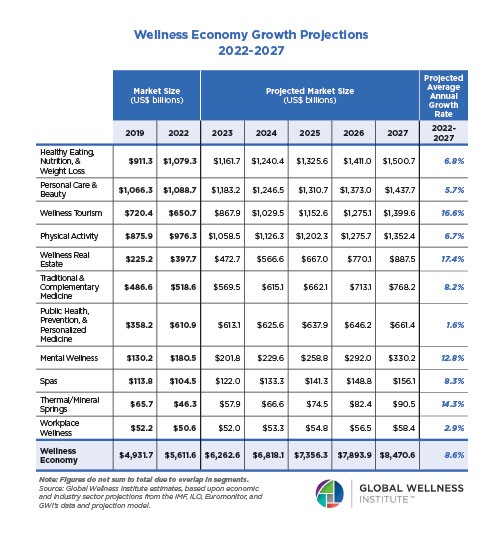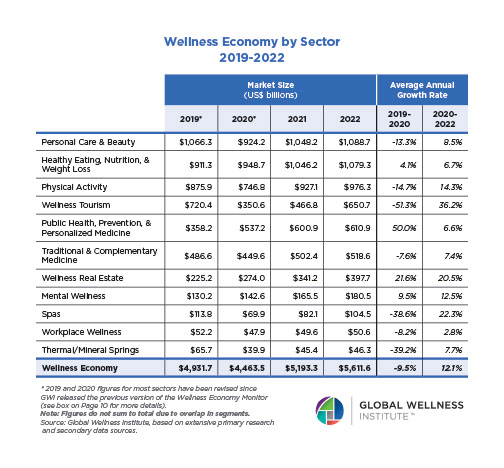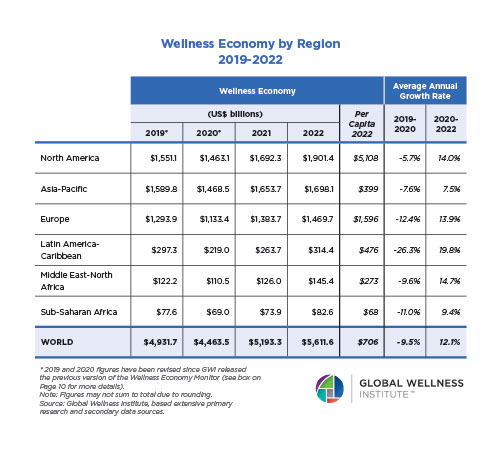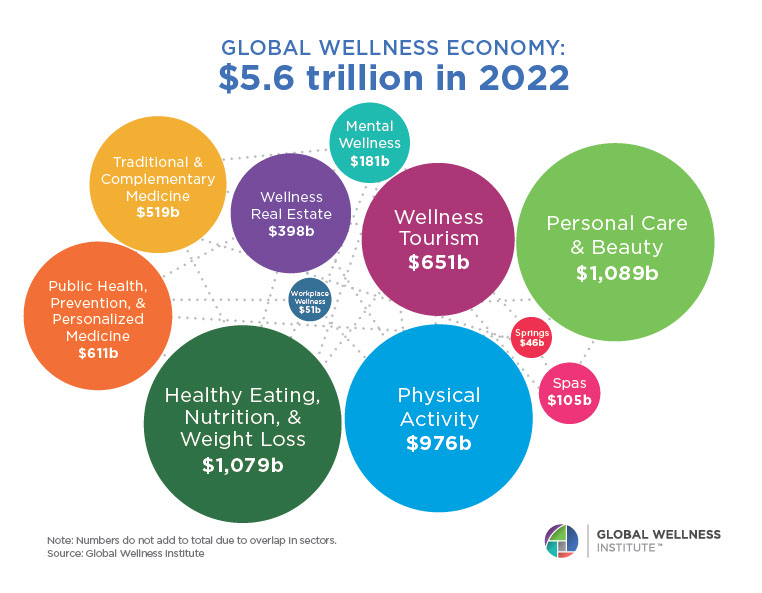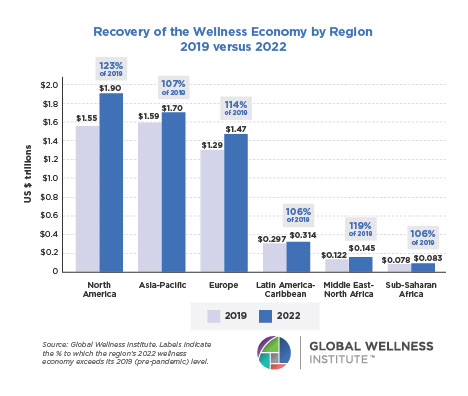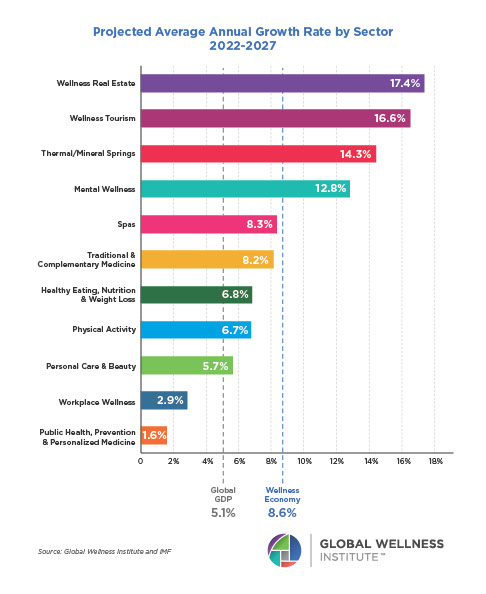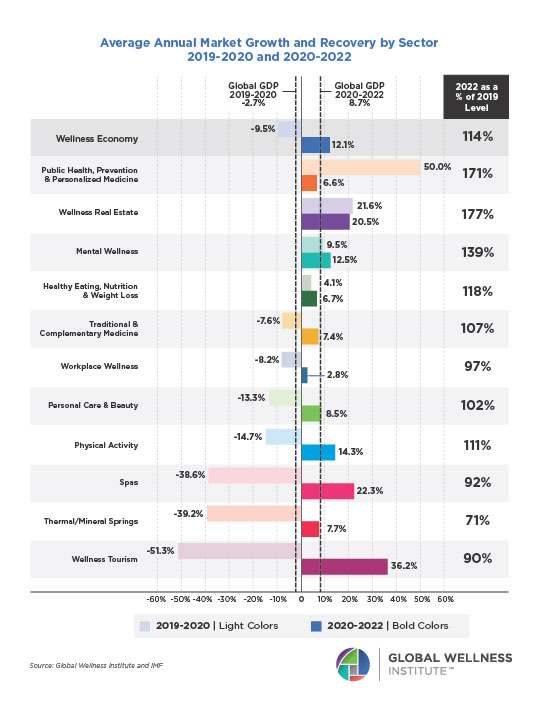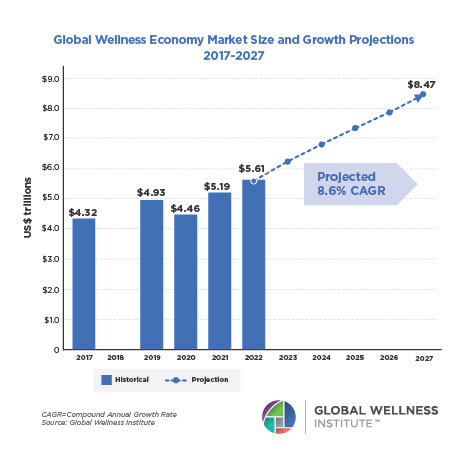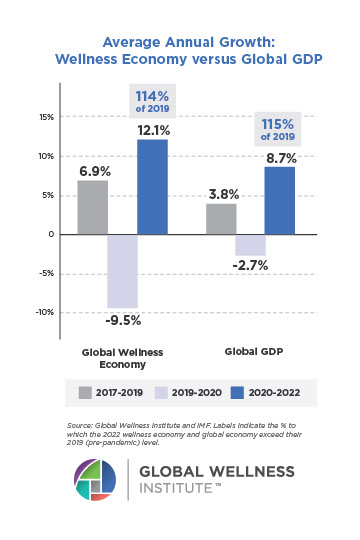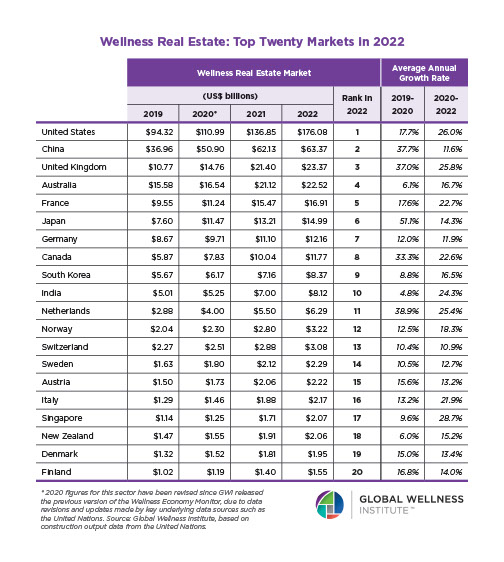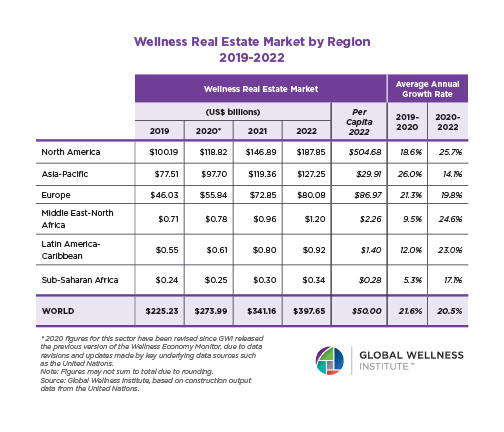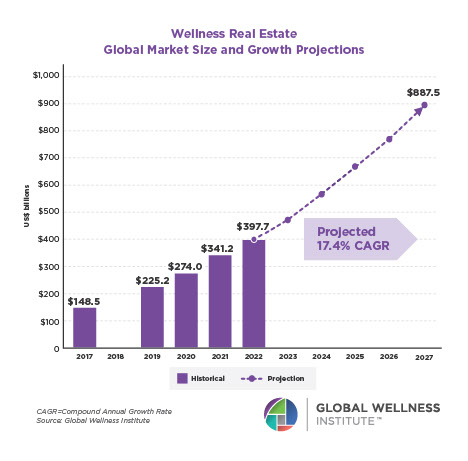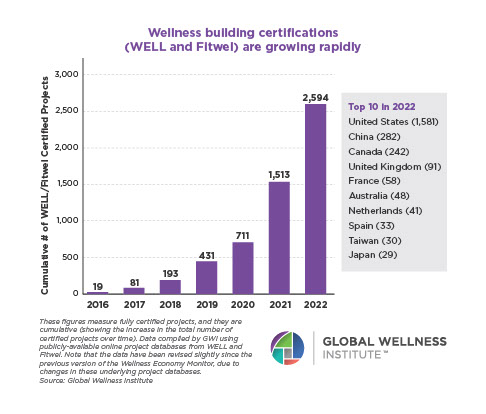Mental Wellness Initiative
2025 Trends
![]()
The Mental Wellness Initiative 2025 Trends reflect a continuous shift towards proactive mental wellness and health approaches. The 2025 trends reflect a more granular view of previous trends and move away from generalities, aiming toward more precision and greater understanding of mental wellness pathways. These continue to evolve as greater knowledge and advancement in modalities arrive from both research and real-world applications.

TREND 1: Longevity Mental Wellness
The Intentional Curation of Environment for Positive Human Exposome
The convergence of physical and mental fitness in different wellness environments are providing clues to the organic nudging of behavioral shifts for positive lifestyle choices across the lifespan and highlight a holistic approach to mental health and wellness.
Resistance training, stretching, mindfulness practices together with cardiovascular activity are being programmed into models to support holistic mental health and wellness, and healthy aging. This means an opportunity to seamlessly integrate these activities in everything from fitness to hospitality. There has been a plethora of published research in the last three years reviewing the positive effects of exercise on mental health: from the effects of yoga on people with schizophrenia, to the improvement of sleep quality, to alleviating alcohol dependence— because of exercise’s ability to decrease cravings. There also is persistent evidence to suggest that physical exercise improves depression and anxiety symptoms.
Translating all the evidence of the benefits of physical exercise on mental health into clinical practice, fitness, and wellness environments is of paramount importance for long-term positive impact.
There is a need for greater recognition of the financial cost of NOT addressing brain health. At DAVOS 2025, brain health/brain wealth was a key theme. During the conference, it was noted that brain health is no longer just a health issue, it’s an economic emergency. The McKinsey Health Institute estimates brain health disorders cost the global economy $5 trillion annually. By investing strategically in brain health, we can build the foundations for future prosperity. Without this we risk economic decline and wasted human potential.
TREND 2: Resistance Training Found to Be Crucial for Brain Health
A focused approach informs us that resistance training (particularly in later life) enhances cognitive function, improving memory, and even reducing the risk of age-related brain degeneration. This type of training promotes blood flow to the brain, which is essential for delivering nutrients and oxygen to brain cells.
Resistance training can stimulate the release of brain-derived neurotrophic factor (BDNF), a protein that plays a crucial role in brain cell growth, learning, and memory. It can also have a positive impact on mental health, helping reduce anxiety and depression, and improve sleep.
Look for resistance training to take a front burner position in programs to enhance brain health and mental wellness.
TREND 3: Gut-Brain Research Is Becoming More Granular
New research is linking specific bacterial groups with several mental health conditions. In studying a cohort of prisoners convicted of violent assaults and a matched group of non-impulsive prisoners from the same facility, researchers found that impulsive offenders had a higher presence of Bacteroides and Barnesiella bacteria, while non-impulsive individuals had greater levels of Catenisphaera. The researchers suggest that Bacteroides, in particular, may play a role in regulating serotonin, a neurotransmitter linked to impulse control and aggression. This opens possibilities of tailored nutritional, probiotic, and gut microbiota-based treatments to manage specific mental health and behavioral conditions.
TREND 4: Combatting Microplastics in the Brain
Twenty years of investigation and over 7,000 research papers have examined the effects of microplastics in the environment and on the human body—including smaller particles of microplastics in our lungs, livers, kidneys, blood and reproductive organs. Microplastics have crossed protective barriers into our brains and hearts. The concentration of microplastics has been found to be about six times higher in brain samples from people who had dementia. As part of a wellness lifestyle routine, these steps are being highlighted to prevent or get rid of microplastics in our bodies:
- Prioritize a plastic-free diet and plastic free cooking implements.
- Avoid plastic takeout.
- Avoid heating food in plastic containers.
- Avoid plastic water bottles—research shows that in some cases bottled water contains up to 22 times more microplastics than tap water.
- Boil water—this may help remove up to 90% of microplastics.
- Use high-quality filters like reverse osmosis or activated carbon to reduce plastic contamination.
- Eat a fiber-rich diet to support digestion and excretion of microplastics.
- Choose fresh, organic foods over packaged and processed options.
- Take regular sauna sessions to eliminate toxins through sweat.
- Use natural-fiber clothing to minimize synthetic fiber shedding.
- Take probiotics.
As to probiotics, a study published in January 2025, found that specific probiotics absorbing and excreting microplastics show potential gut health benefits. Probiotics like Lacticaseibacillus paracasei DT66, a major probiotic well known for its anti-inflammatory properties, and Lactiplantibacillus plantarum DT88, commonly used in the food industry, can effectively absorb and facilitate microplastic excretion. Nutritional and naturopathic wellness treatments are likely to evolve as therapies for removing microplastics from the gut and, via the gut-brain axis, from the brain.
Expect procedures such as microplastic removal for brain and body health to become front burner offerings in the medical wellness space.
TREND 5: The Evolution of the Social Mind
Combating Loneliness While Promoting Conscious Living
Last year, we talked about combating loneliness through new design approaches in hospitality. This year we continue the theme and focus on activities that build connectivity and strengthen social cohesion and mental wellness.
According to Oxford Academic, “Social cognition is how we encode, analyse, store, and use information about the people we meet and the relationships that define us.” Having an interest in society—specifically, being interested in social welfare or the wellbeing of society as a whole—is also referred to as having a Social Mind. According to the 2025 World Happiness Report, “Sharing meals proves to be an exceptionally strong indicator of subjective wellbeing, on par with income and unemployment. Those who share more meals with others report significantly higher levels of life satisfaction and positive affect, and lower levels of negative affect.”
Bathing Traditions and the Social Mind
We see examples of social wellness in the continuing evolution of millenary bathing traditions, from Japan’s Onsen, to the Russian Banya, to Finnish Sauna, that bring people together to bond, as well as Japanese forest bathing traditions (Shinrin-yoku) and provide fulfilling and engaging ways to come together and build cohesion while nudging people into mental wellness.
TREND 6: The Evolution of Self-Care Through Self-Awareness and Self-Responsibility
With a myriad of wearables available, measuring all sorts of different biomarkers, we are becoming increasingly disconnected from ourselves, relying on external clues to pay attention to ourselves, while possibly getting increasingly anxious about our results.
Self-awareness will be more important than ever in order to learn how to listen to our body instead of relying mainly on devices.
As we are responsible for our own mental wellbeing, self-responsibility will play a crucial role. By being conscious of what our body is crying out about, once we are tuned in, we are unable to stop listening. We will need to act, with self-care being a direct result.
Self-care, as a deliberate decision, will become more exploratory and will include multisensorial elements and experiences—social, emotional, physical and intellectual—to support it.

